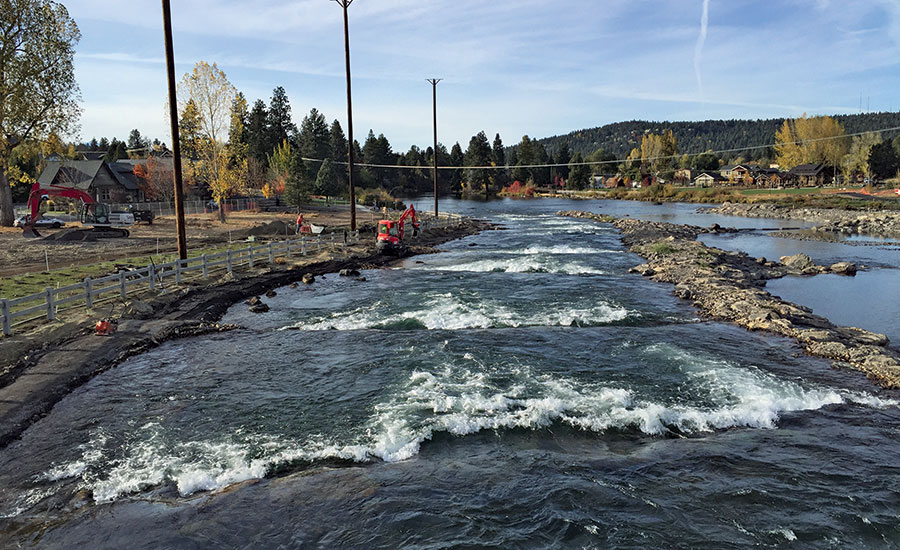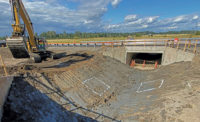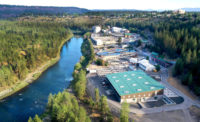Award of Merit Water/Environment - Colorado Dam Safe Passage (Bend Whitewater Park)

Image Courtesy of Hamilton Construction
Colorado Dam Safe Passage (Bend Whitewater Park)
Bend, Ore.
Award of Merit
Owner/Developer Bend Parks and Recreation District
General Contractor Hamilton Construction Co.
Lead Design Firm Otak
Subcontractors Greenworks; Pacific Habitat Services; Wallace Group; Dave Place Consulting; East Slope Cultural Services; RiverRestoration; Absolute Flagging; ACF West; American Concrete Cutting; Columbia River Contractors; Harper Houf Peterson Righellis; JAL Construction; Mikes Fence Center; Mohawk Metal; Obermeyer Hydro; Paul Brothers; Evans Hamilton; Roger Langeliers Construction; Skyline Steel; Pacific Underwater Construction; Tomco Electric; Universal Industrial Sales; Willamette Valley Steel
The creation of Bend Whitewater Park rehabilitated a stretch of the Deschutes River in Bend, Ore., creating an improved habitat for fish and wildlife as well as a safer passage for river rafters with the West Coast’s first “adjustable standing wave” kayak/surfing run. Built using Oregon’s construction manager/general contractor process, the $8-million passage also features a pedestrian bridge, built with weathered steel, and a concrete cast-in-place deck.
The whitewater features are adjusted by remote-controlled gates constructed in the riverbed. A series of sensors were installed above the dam and in the whitewater pools to monitor water levels. A programmable logic controller then determines the proper gate position. In the event of a flood, all the gates can be lowered to match historical flow rates that existed prior to the project.
A third habitat channel on the river’s east side includes multiple water cascades, shallow bedding areas and backwater areas for fish and other aquatic animals. A rock island separates the habitat channel from the other two features and was designed to create an aesthetic focal point while also keeping people out of the sensitive area. There is extensive use of form liner and precast paneling in the substructure and walls, and the center span steps out to allow for a viewing area overlooking the whitewater channel. A variety of demands on the river, including crop irrigation and filling stock ponds, impacted the construction schedule and releases from the upstream Wickiup Reservoir.



